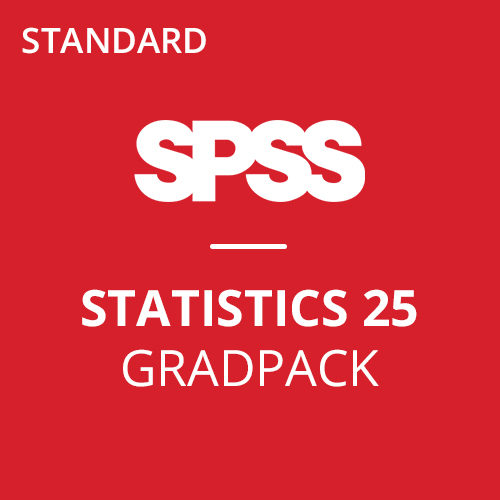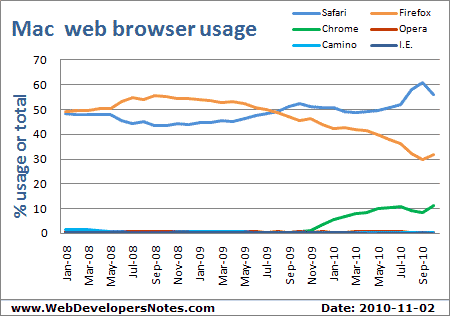User Statistics For: Mac
Is there publicly available data somewhere with estimates on the number of users of each Mac OS X version? Particularly for the major releases (10.6. Snow Leopard, 10.5. Leopard.)? I am writing a new application and am wondering whether it's still worth the effort of supporting pre-Leopard versions of Mac OS X, mostly Tiger. I am using with the option of tracking system profiles with every update check, but as the application is still in early 0.
releases the number of users so far is so small it's hardly statistically relevant. The application is built to support Tiger and up, but I have not yet seen a Tiger user in the system profiles yet. I realise there are some other factors at play too besides the number of users to decide whether to still support an older release.
For example, I waited a long time to upgrade to Leopard myself, and at some point I got so used to seeing 'requires at least Mac OS X 10.5' that I stopped looking for new applications altogether. I expect that's similar for anyone else still using Tiger. Still, would be nice to have the data.
Also just out of curiosity. Anyone seen someone still using Cheetah lately?;). This question comes up reasonably often, and the best data is probably Sparkle stats, which is no doubt slightly skewed towards more tech-savvy users. Of course, this may be fine if that's your target market!
OmniGroup also provides stats from their updater: The numbers are quite different to Sparkle's, and the graph of users over time indicates a slow decline for 10.4 (30%), a fast decline for 10.5 (25%), and a fast uptake of 10.6 (45%). Finally, has run a few polls recently about OS version and hardware type:.
Their numbers are similar to those from Sparkle, although they are self reported. Most interestingly though, they show 45% of users who still own/use a PPC Mac, and just over 7% have Hackintoshes. Adium (the open source chat client) publishes. This may be a good approximation of the market share of each Mac OS X version, as well as CPU types and Mac model. Just proportionate the percentages with the total number of Mac OS X users (about 9% of personal computer users) and you should be able to get a fairly good ballpark figure of the number of users of each OS.
Of course if Google publish their home page's browser-agent statistics, it will be a more accurate estimate. But too bad that isn't happening (anybody at Google reading this?;-) ) I hope this helps.
For 2014 and 2015 IDC charts Apple’s market share as growing modestly in 2015 compared with 2014, but remaining under 10 percent of the total market. Apple’s profit share of the PC space is far larger, thanks to its refusal to ship the $400 to $600 PCs that often dominate sales at OEMs like Dell, HP, and Lenovo. But its historic market share has been in the 4 to 15 percent range over the last 10 years. It improved significantly once Apple adopted x86 processors and has bounced up and down based on refresh cycle timing and the overall contraction in PC market shipments over the past five years. Q1 2015 – Q1 2016, US market Gartner’s figures are higher than what IDC measured, but they’re still stable and show relatively constant market share. I can easily believe that Apple could pick up a bit of extra market share through the end of 2017 thanks to its recent product refreshes.
Twitter Users Statistics

But a 20-25 percent exodus of Windows PC users over to Apple wouldn’t just be unprecedented — it would likely kill at least one major OEM. And it’s not even clear Apple could ramp production to meet increased demand. Consider the actual numbers in Gartner’s chart. In Q1 2016, Apple shipped an estimated 1.66 million computers, compared with 13.146 million for the entire market. Let’s be generous and assume that 1 percent of the market is composed of Linux buyers who wouldn’t switch to Windows or Mac in any event. The resulting market (minus Apple’s share and our Linux carveout) is 11.365 million PCs in North America in Q1 2016. If even 15 percent of the existing PC market suddenly switched its buying to Mac, Apple’s total market share would more than double.


But contract manufacturing takes time, as does creating appropriate supply lines. That’s even more true when, like Apple, you tend to define your style with things like unibody aluminum chassis. Sure, whichever PC manufacturing company handles Dell or HP orders would actively want to start building machines for Apple, but that doesn’t mean they’ve got the chassis and other equipment they would need to do so. Consideration isn’t surprising, switching would be The bottom line is this: There have always been people who switched between Mac and PCs, either on a semi-regular basis or as a one-time deal. Apple has at least doubled its market share since switching to x86 chips, thanks in no small part to its ability to run Windows.
The company holds high-profile press events and is often treated as a bellwether for the entire PC industry. Even Apple’s failed products have often been trendsetters in retrospect; the Apple Newton was an early forerunner of PDAs, while the G4 Cube was unquestionably a small-form-factor system.
Mobile Phone Users Statistics
If I was only in the PC market every few years, I’d undoubtedly at least check out Apple’s product lines when making my decision. I’m not implying wrongdoing on Verto’s part, but I don’t believe their survey results. The idea that such a huge chunk of the PC market could or would simply up and move to Apple, or that Apple could even absorb the influx of customers within such a short period of time, are both highly dubious assertions. Customers may talk about making these kinds of moves due to brand halos or favorable perception, but there’s no indication that PC consumers are going to leap for Apple en masse.